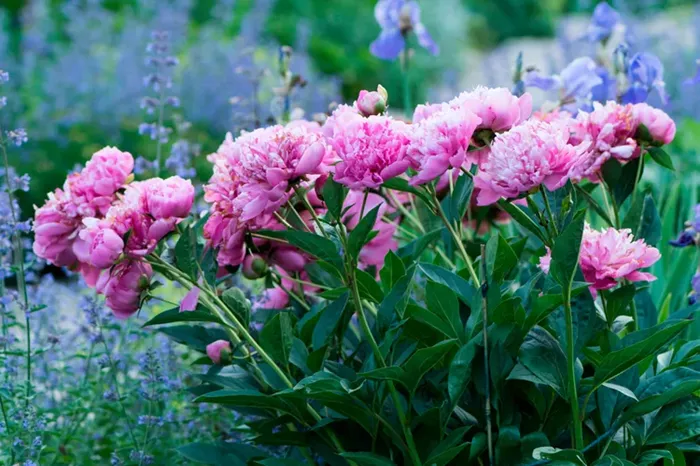Herbaceous peonies (Paeonia lactiflora) are among the most straightforward flowering plants to cultivate. To ensure these perennials thrive, it’s essential to know when and how to cut them back. Peonies produce new growth from their crown each spring, but their foliage dies back to the ground after frost. While many plants benefit from leaving dead foliage over winter, herbaceous peonies require an autumn trim for best results. This guide details why and how to cut back peonies to promote healthier plants and more blooms.
The Importance of Cutting Back Peonies
Peonies have a crown and storage roots beneath the soil that produce new buds annually. They thrive with good drainage and ample air circulation, which helps prevent disease. While cleaning up dead foliage enhances the garden’s appearance, it also minimizes disease and pest problems for the upcoming year.
Fungal diseases like peony leaf blotch (Cladosporium paeoniae) and powdery mildew can overwinter in dead peony foliage and stems. By cutting back peonies and disposing of the old foliage, gardeners eliminate these fungi and their food source. This cleanup improves air circulation and reduces the damp conditions that promote fungal growth.
When to Cut Back Peonies
Peonies are unique in that they should be cut back in the fall, contrary to the general practice of leaving garden debris until spring. While some garden waste supports beneficial insects over winter, dead peony foliage can harbor plant diseases.
Peonies bloom in late spring, but their work isn’t finished. After flowering, peonies need to replenish their energy stores to prepare for the next growing season. Their green foliage captures sunlight and performs photosynthesis throughout summer and fall, creating carbohydrates stored in the roots. Cutting back too early can impact next year’s growth.
The ideal time to cut back peonies is after the first frost in autumn. When the foliage turns orange or deep red and cooler weather sets in, it’s time to start pruning.
How to Cut Back Peonies
Pruning herbaceous peonies is a simple process requiring minimal tools. Here’s a step-by-step guide:
Wait for the foliage to mature: Let the leaves turn a vibrant orange or red, blending with autumn colors.
Cut back after the first frost: Use sharp, clean pruners or shears to trim the stems just above the crown, where they emerge from the soil.
Dispose of the cuttings: Gather and discard the stems and leaves. Avoid composting them, as pathogens may survive and potentially reinfect plants through compost.Gather and discard the stems and leaves. Avoid composting them, as pathogens may survive and potentially reinfect plants through compost.
Mulch if necessary: In colder climates, add straw or pine needle mulch around the crowns to protect them from extreme temperatures. Remove the mulch in spring before new growth begins.
By following these steps, you can ensure your herbaceous peonies remain healthy and continue to produce beautiful blooms year after year.


